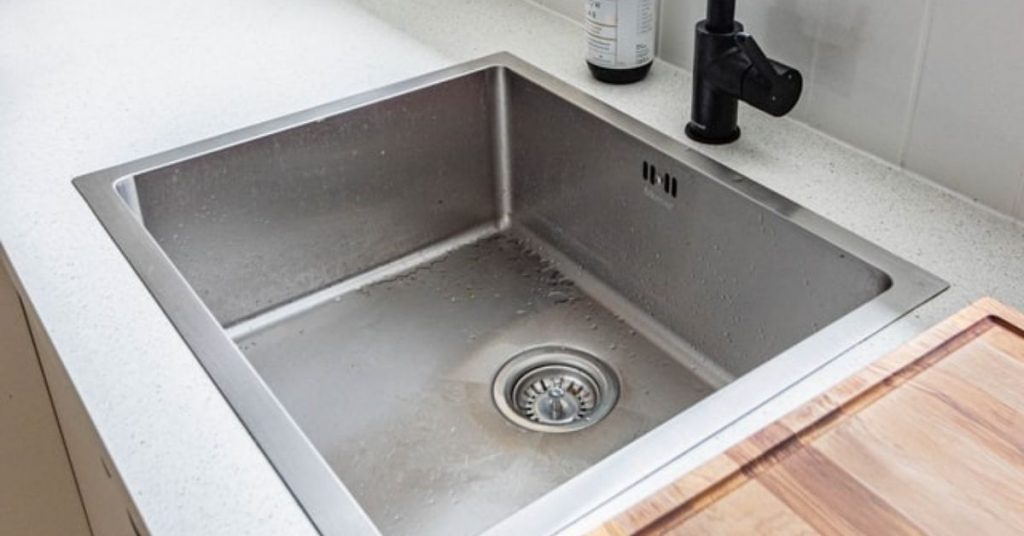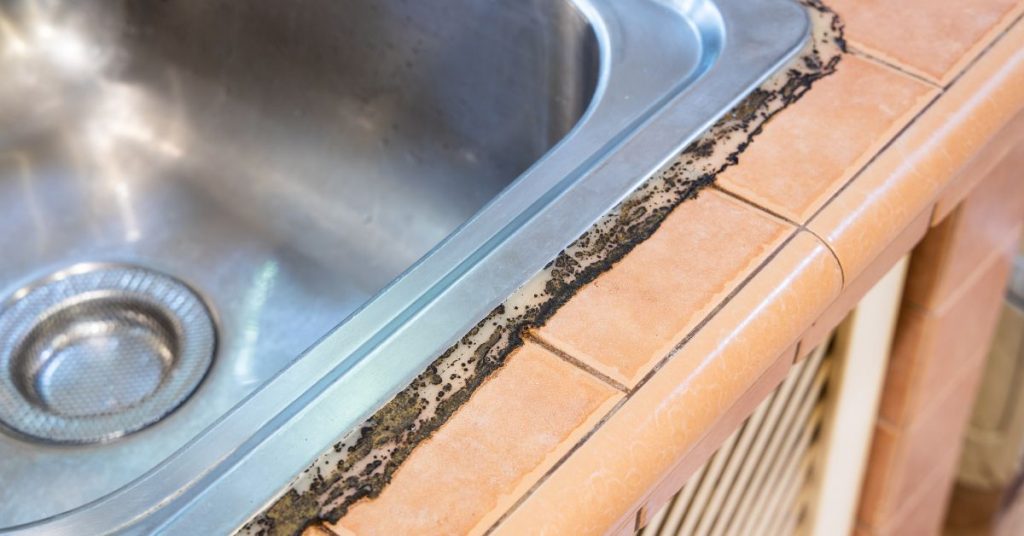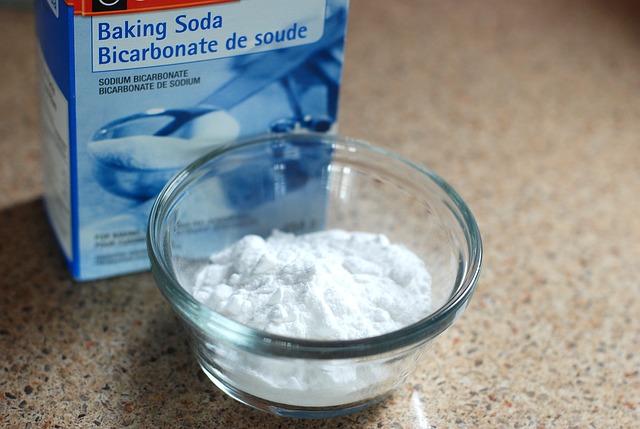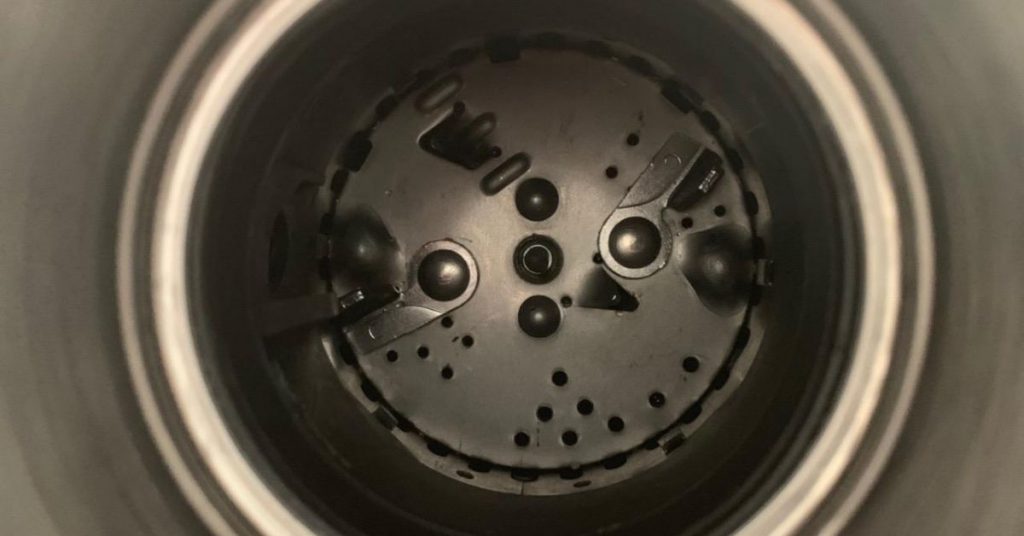
o naturally kill mold in a sink drain, you can use safe and eco-friendly methods. Here’s a brief summary of the steps:
- Safety Precautions: Put on gloves, safety goggles, and a mask to protect yourself from mold spores and cleaning solutions.
- Boiling Water: Begin by pouring boiling water down the drain to kill mold and loosen it. This will also help clear away any organic matter that mold may be feeding on.
- Baking Soda: Add about 1/2 cup of baking soda into the drain. Baking soda is an effective natural cleaner and deodorizer. It can help break down mold and neutralize odors.
- Vinegar: Pour 1/2 cup of distilled white vinegar into the drain after the baking soda. The chemical reaction between baking soda and vinegar can help dissolve mold and eliminate it.
- Cover and Wait: Plug the drain or cover it with a cloth or stopper to trap the baking soda and vinegar mixture inside the drain. Allow it to sit for at least 30 minutes or longer. The longer you wait, the more effective it will be.
- Scrubbing (Optional): If you can access the drain opening, you may scrub the inside of the drain with a long brush or pipe cleaner to dislodge any remaining mold. Be gentle to avoid damaging the pipes.
- Rinse with Hot Water: Remove the cover or plug and flush the drain with hot water. This will wash away the dissolved mold, baking soda, and vinegar residue.
- Regular Maintenance: To prevent mold from returning, consider running hot water down the drain regularly and using a drain strainer to catch debris that can contribute to mold growth.
- Ventilation: Ensure that the area is well-ventilated to help prevent future mold growth.
How and Where Mold Grows in a Sink Drain

If you look underneath you kitchen/bathroom sink, you will notice that that there is a vertical pipe connecting the P-trap (U-bend) to the sink’s drain opening/strainer. That piece of pipe is called a tailpiece.
Mold in a sink drain grows inside the tailpiece. When you dump food waste down the sink drain, not every piece of the waste flows down the drainpipe.
Some of it sticks on the tailpiece and since they are wet and organic, the mold spores present have a source of nourishment and they therefore start to grow.
If you have a double-bowl kitchen sink, there will also be a secondary pipe connecting the second sink drain to the main one called a tee. That is also another place where mold will thrive.
The P-trap is always full of water and hence mold cannot grow inside it. Mold that grows beyond the P-trap should really not disturb you.
The reason the P-trap is full of water is to act as a barrier, preventing sewer gases and other gases from coming up through the sink drain. The P-trap also traps potential drain clogs so if your sink is draining slowly you may need to unclog it as well.
The good thing is that the baking soda and vinegar combination will also unclog drains successfully. If not, you can always remove the P-trap and remove the clog physically.
Using Baking Soda and Vinegar

Both baking soda and vinegar are readily available products that are safe and effective at the same time. They are fantastic cleaning agents when used together or even individually and will also remove bad odors.
Baking soda is an alkaline product while vinegar is weak acid made from acetic acid and water. When combined together, the 2 products will form a mild explosive which is what breaks down the mold.
You can as well use hydrogen peroxide as a replacement for vinegar. Either of them will work just fine.
Here is how to get rid of mold in a sink drain using baking soda and vinegar:
- Pour ½ a cup of baking soda down the sink drain.
- Slowly add 1 cup of distilled white vinegar. The vinegar reacts very fast with the baking soda and hence the reason to pour it out slowly.
- Wait for about 15 minutes for the solution to work out its magic.
- Blast hot water down the sink drain. If you have metal drainpipes you can dump a gallon of boiling water but for plastic drainpipes pour out the faucet’s hot water for about a minute.
People always forget the sink’s overflow drain. That is also another place that mold grow resulting in a nasty musty smell.
Stick a funnel inside the sink overflow and pour baking soda and vinegar through it as well. After the 15 minutes, blast hot water through the overflow to flush out all the mold remnants still sticking on the drain’s surface.
Scrubbing the Tailpiece
This is by far my favorite as well as most effective method to remove mold from a sink drain. There are 2 ways to do it.
- You can remove the sink’s strainer or stopper and scrub the tailpiece from above the sink.
- Disconnect the P-trap and scrub the tailpiece from the bottom. This is the best method if you have a double-bowl kitchen sink.
Whether removing mold from a kitchen/bathroom sink drain, I think disconnecting the P-trap and scrubbing the tailpiece using a bottle brush from the bottom is the best method. You also get a chance to clean the P-trap as well.
Here is how to do it:
- Start by clearing the space under the sink. If you store stuff under the sink get rid of them to get yourself ample space to work with.
- Place a bucket or pan under the P-trap. Remember the P-trap is always full of water and you do not want to spill it on your floor.
- Disconnect the P-trap. You will notice that the P-trap has 2 connections. Start with the connection on the short arm. That way, you will be able to drain out all the water into the pan thanks to gravity.
- The P-trap connections are usually hand-tight. Only use a wrench if they are too tight.
- Check if there is any gunk inside the P-trap. Empty it out in the bucket/pan.
- If you have a double-bowl kitchen sink, disconnect the tee as well and also check if there is gunk stuck inside it and get rid of it as well.
- Pour warm/hot water in a small bowl/bucket and squirt a generous amount of dish soap in it. Better still, spray some of the dish soap inside the tailpiece.
- Stick a bottle brush inside the soapy hot water and use it to scrub the inside of the drain tailpiece.
- Scrub the inside of the tee as well without forgetting the P-trap.
- When you are done scrubbing connect the tee and P-trap back.
- Run hot water for about 30 seconds to flush anything still left in the pipes.
And that is how to clean a sink drain to get rid of mold.
In a Garbage Disposal

If your kitchen sink is connected to a garbage disposal, mold is even more likely to grow due to all the food scraps stuck inside. Regularly cleaning the garbage disposal will prevent mold from growing.
You should especially regularly clean underneath the splash guard where food scraps tend to collect resulting in an awful odor.
Squirt some dish soap on a bottle brush and stick it inside the garbage disposal. Lift the bottle brush until the bristles are just underneath the splash guard.
Rotate the brush round the splash guard while still running the cold water on a trickle until it is thoroughly cleaned.
To clean the entire garbage disposal follow the following steps:
- Fill the garbage disposal with ice cubes.
- Pour about ½ cup of distilled vinegar inside the garbage disposal.
- Add ¼ cup of rock salt.
- Run the garbage disposal with cold water until all the ice is gone
The salt helps to sharpen the blade as well as scrape the inside of the garbage disposal thereby removing all foods sticking on it. If you want your garbage disposal smelling fresh cut a lemon into several pieces and through one piece at a time as you run the disposal.
Clean your sink drains with baking soda and vinegar once a fortnight to prevent mold from growing.





